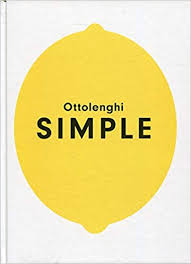 I don’t remember how I came across this book – could have been through Gastropod? – but I thought it sounded like just my thing. Time as an ingredient makes a lot of sense, when you consider it! And overall, Linford does look at some interesting points in connecting food with time; I learned a few things and was encouraged in my love of cooking and food.
I don’t remember how I came across this book – could have been through Gastropod? – but I thought it sounded like just my thing. Time as an ingredient makes a lot of sense, when you consider it! And overall, Linford does look at some interesting points in connecting food with time; I learned a few things and was encouraged in my love of cooking and food.
However, this book turned out to be not quite what I expected. On reflection, I think I was expecting something more like Michael Pollan’s Cooked, where he meditates on particular ways in which fire or air or whatever have an impact on cooking and food at length. This is not that. Instead, this is a long series of vignettes. Some of them do go over pages – there’s a good few pages on pickles, and on smoking, and the wonders of freezing., among others. But in general each topic within each timeframe (seconds, minutes, hours, days, weeks, months, years) is relatively short, addressing the connection between the topic and time – the seconds between different stages of caramel, the time it takes to make true traditional Modena balsamic vinegar – and usually not going into the depth that my heart really wanted. (And sometimes the topics chosen in each chapter seem to be tangential to the concept of time as an ingredient, but maybe I missed the point.)
If what you’re interested in is a series of short stories about time and cooking, that you can easily dip into and out of, that are sometimes amusing and sometimes poignant and that remind you that cooking and good food are good things, then you will probably enjoy this book.

 This Fortnum and Mason tea, Earl Grey Classic, was foraged for me by the lovely Gill, along with a few other F&M teas; apparently she and a friend had a delightful time in London, discovering that you can get minimum quantities of tea in nice resealable bags so you can taste test a whole range of teas. I approve of this idea. A lot.
This Fortnum and Mason tea, Earl Grey Classic, was foraged for me by the lovely Gill, along with a few other F&M teas; apparently she and a friend had a delightful time in London, discovering that you can get minimum quantities of tea in nice resealable bags so you can taste test a whole range of teas. I approve of this idea. A lot.
 It seems like half the people in my extended family got this book for Christmas. Certainly I did, because when I saw it at a friend’s house I sent a link to the Fishpond listing to my mum, with the subject heading OH MY AN OTTOLENGHI BOOK I DON’T OWN and because she’s a smart lady she knew what to do.
It seems like half the people in my extended family got this book for Christmas. Certainly I did, because when I saw it at a friend’s house I sent a link to the Fishpond listing to my mum, with the subject heading OH MY AN OTTOLENGHI BOOK I DON’T OWN and because she’s a smart lady she knew what to do. When we were in the UK some time ago, I visited Whittard of Chelsea and got completely overwhelmed by their amazing range of tea. I came home with just two, because I decided to be sensible even though it hurt, precious. One of those I bought was
When we were in the UK some time ago, I visited Whittard of Chelsea and got completely overwhelmed by their amazing range of tea. I came home with just two, because I decided to be sensible even though it hurt, precious. One of those I bought was  Perceptive followers of the blog will notice that I haven’t posted in um, a little while. I have still been drinking Earl Grey – a lot – but… yeh. The blogging has fallen off as other things have distracted me, and as I’ve mostly-subconsciously rebelled against my self-imposed weekly expectation of tea reviews. Now many of those were written in advance, but nonetheless… it’s got to be an imposition lately, and so I’ve just… not done it.
Perceptive followers of the blog will notice that I haven’t posted in um, a little while. I have still been drinking Earl Grey – a lot – but… yeh. The blogging has fallen off as other things have distracted me, and as I’ve mostly-subconsciously rebelled against my self-imposed weekly expectation of tea reviews. Now many of those were written in advance, but nonetheless… it’s got to be an imposition lately, and so I’ve just… not done it. This book was sent to me by the publisher, Murdoch Books, at no cost. It’s out on 1 November; RRP $35.
This book was sent to me by the publisher, Murdoch Books, at no cost. It’s out on 1 November; RRP $35.
 Kappy sent me
Kappy sent me  Another gift from Gill! Although this one is not from Fortnum and Mason, but from
Another gift from Gill! Although this one is not from Fortnum and Mason, but from